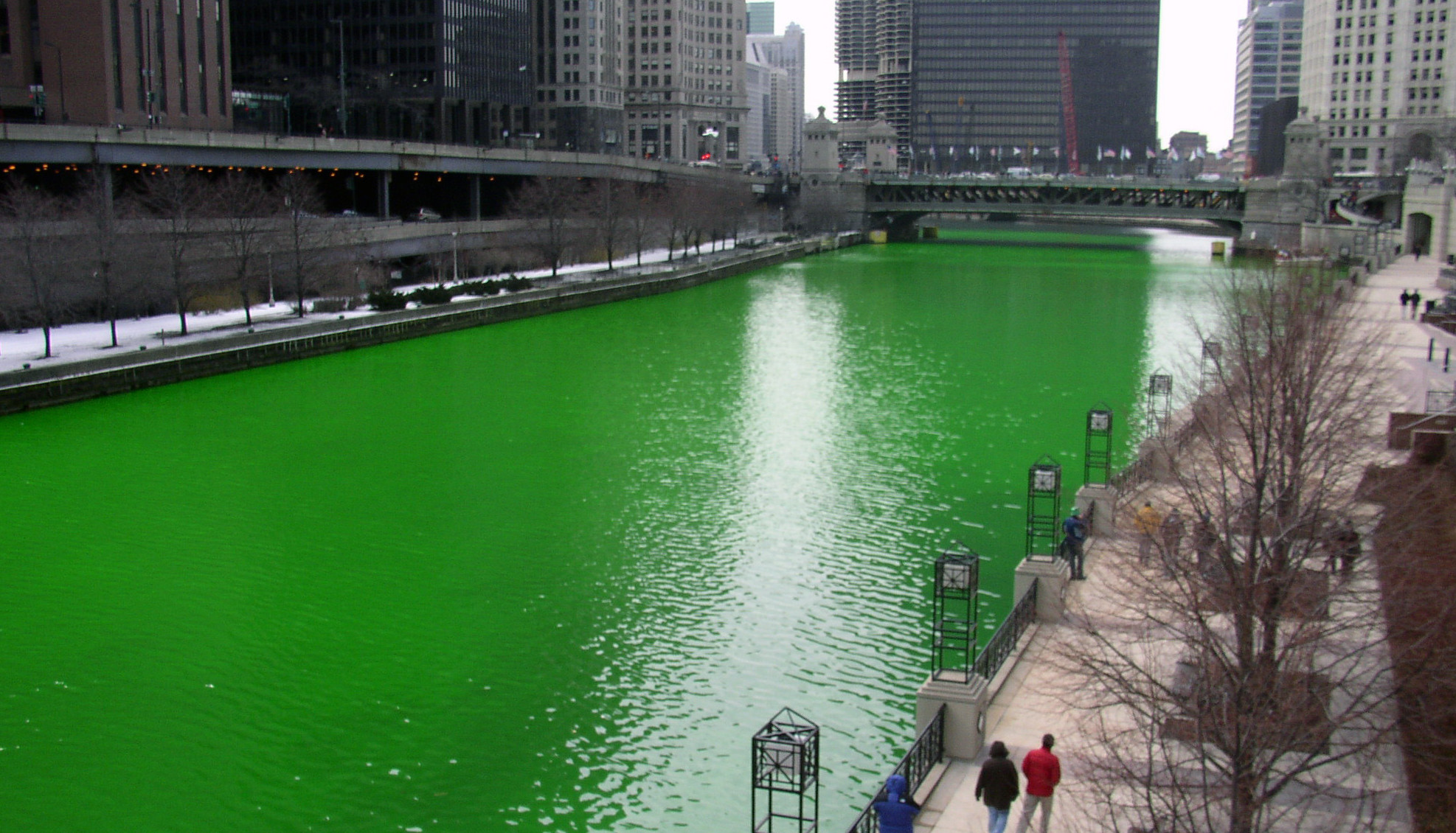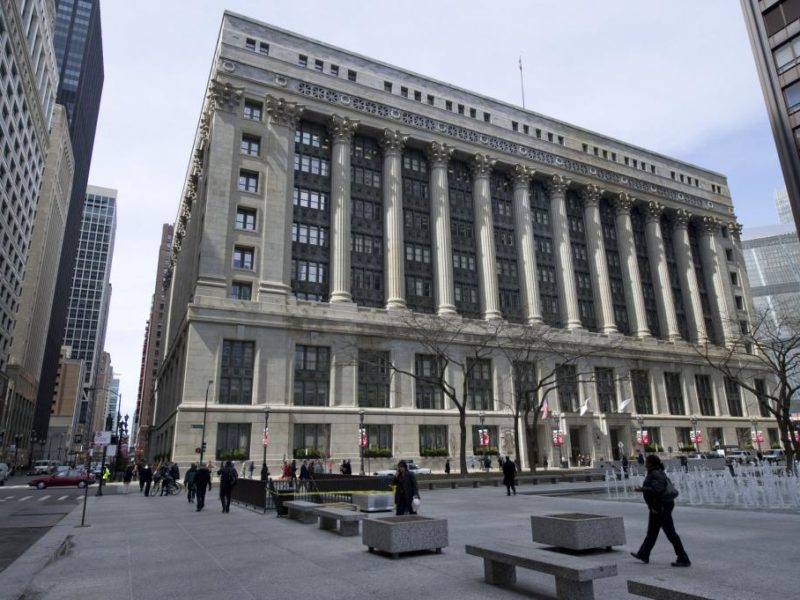
Luck of the Irish
Welcome to Tuesday Trivia! Each week, we tackle this big, bizarre, wonderful city through a different lens, asking you to answer the tough questions. As the green dye drains from the Chicago River, returning the river to its usual murky blue-gray, we thought it would be a perfect time to reflect on Chicago’s Irish history and culture.
1. Chicago loves to dye the Chicago River green in honor of St. Patrick. When did this tradition begin?
a. 1956
b. 1962
c. 1973
d. 1980
Answer: B. Mayor Richard J. Daley is commonly credited with proposing the now-iconic green river dye. However, it was actually his friend and Chicago Plumbers Union business manager Stephen M. Bailey who came up with the plan. These days, the river is dyed using an environmentally friendly orange powder. Check out this time-lapse video of the river dyeing process in action from Chicagoist.
2. By 1850, Irish immigrants comprised what percentage of Chicago’s population?
a. 10 percent
b. 15 percent
c. 20 percent
d. 25 percent
Answer: C. The Great Famine of 1845 to 1852 impelled huge numbers of Irish men, women and children to immigrate to the United States. By 1850, one-fifth of Chicago’s population was Irish.
3. Comiskey Park, now known as U.S. Cellular Field, was named for first-generation Irish-American Chicagoan Charles Comiskey, the son of politician John Comiskey and founding owner of the Chicago White Sox. What was Comiskey’s nickname?
a. “The Old Roman”
b. “Old White Stockings”
c. Charles “1919” Comiskey
d. “Commy”
Answer: A and D. Allegedly, Comiskey was known as “The Old Roman” because of his strong Romanesque features. “Commy” is Comiskey shortened and not a reference to any of Charles Comiskey’s political leanings. Finally, Comiskey certainly would have objected to “1919” as a nickname. 1919 was the year the White Sox threw the World Series, the Black Sox Scandal permanently tarnished Comiskey’s name.
4. Old St. Patrick’s Church is one of the cornerstones of the Chicago Irish community. Founded in 1846, it was added to the National Register of Historic Places in 1977. From 1912 to 1922, Chicago artist Thomas A. O’Shaughnessy redecorated it using this popular architectural style.
a. Prairie School
b. Byzantine
c. Art Deco
d. Celtic Revival
Answer: D. Celtic Revival artwork celebrates traditional Celtic artwork and craftsmanship. O’Shaugnessy modeled his ornamentation in part after art found in the Book of Kells.
5. Which of these Chicago mayors was not Irish?
a. Jane Byrne
b. Richard J. Daley
c. Edward Joseph Kelly
d. Alexander Loyd
Answer: Trick Question! All of these Chicago mayors were of Irish descent.
6. Which of these responsibilities is not held by the South Side Irish Parade Queen title?
a. Appearing in the South Side Irish Parade
b. Playing 16-inch softball
c. Appearing in the downtown St. Patrick’s Day Parade
d. Competing in the Chicago Rose of Tralee Competition
Answer: B. Parade Queens appear in parades on the South Side and downtown and compete in the Rose of Tralee competition. The 2015 Parade Queen, Mary Kate Love, enjoys playing the classic Chicago softball, but does not have to play as a part of her royal duties.
7. Michael Flatley, South Side native and Irish dancer, is best known for his performances in Riverdance and Lord of the Dance. He is also a Guinness World Record holder for having the highest insurance policy placed on a dancer’s legs. How much are Flatley’s legs insured for?
a. $40 million
b. $10 million
c. $5 million
d. Trick question, insuring legs is absurd.
Answer: A. Yes, that’s right. Michael Flatley insured his legs for $40 million. By contrast, Tina Turner’s legs are insured for a paltry $3.2 million.
8. What made 2009 an unusual year for the South Side Irish Parade?
a. A zero-tolerance alcohol policy was adopted.
b. It was forced to move to the Northwest side due to construction on the parade route.
c. It was cancelled because it had grown too big and unmanageable.
d. Police horses ate too much corned beef and cabbage and fell asleep on the job.
Answer: C. The parade had grown in size and was becoming unmanageable. The parade was revived in 2012 with a zero-tolerance alcohol policy and a much more strategic security plan to make sure that the thousands of attendees are safe and happy.
9. Which of these classes is not offered by the Irish American Heritage Center?
a. Irish language
b. Memoir and creative writing
c. Step dance
d. Traditional Irish cooking
Answer: D. The Irish American Heritage Center offers a wide range of classes, from Gaelic to step dance. They also offer a wide variety of other cultural programs including academic lectures and live music. But, as of this date, no cooking classes are on offer.
Stay tuned for next week’s trivia featuring famous literary Chicagoans!





